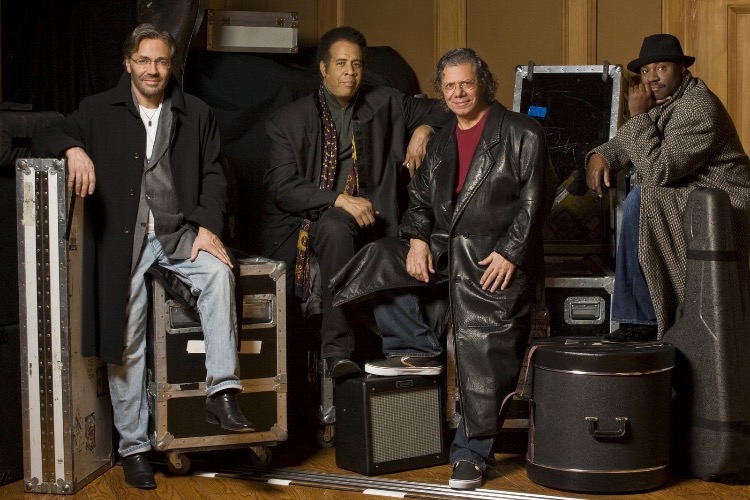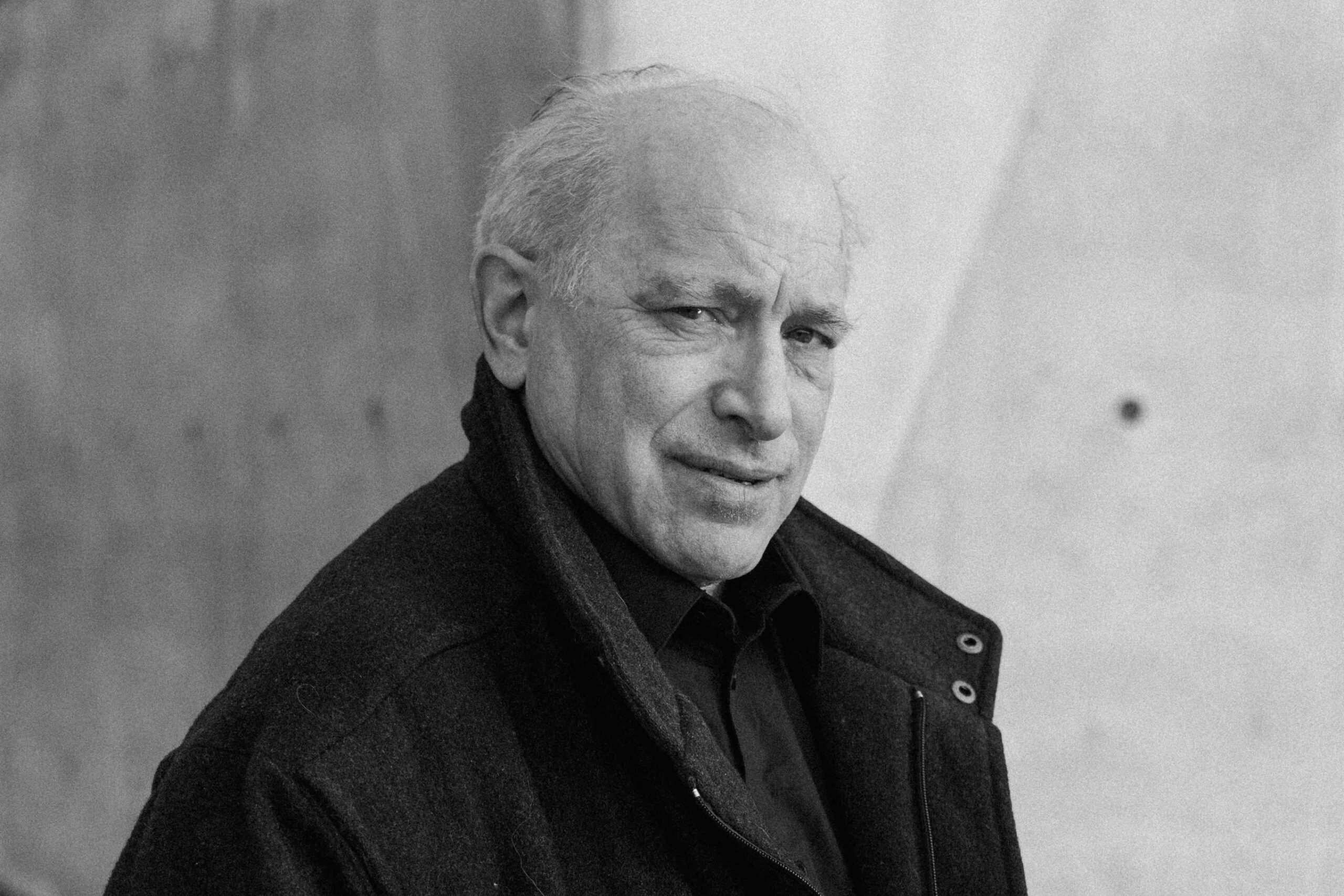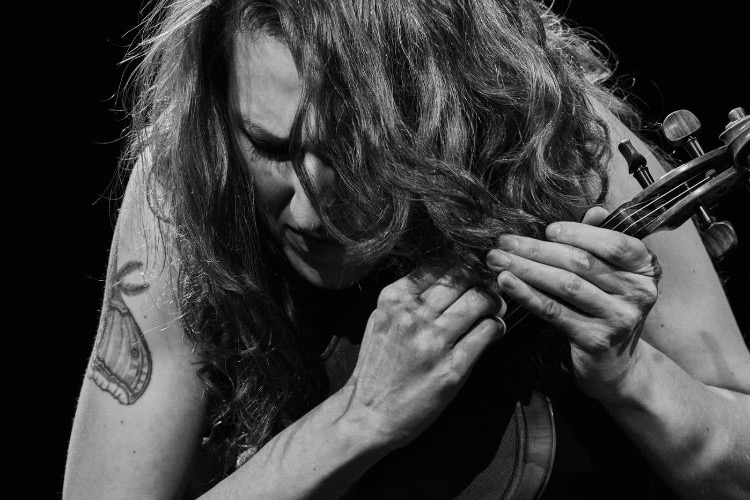Translating the Language: A Conversation with Lenny White (Part Two)
|
Getting your Trinity Audio player ready...
|
We continue our conversation with Lenny White (read part one here), with a discussion of his work with Santana, Azteca, Gato Barbieri, Return to Forever, Jaco Pastorious, and much more.
PostGenre: A lot of your music has Latin influences. You worked with Santana on Caravanserai (Columbia, 1972). Around that time, you also performed and recorded with Azteca. Where does your interest in Latin music come from?
Lenny White: Well, you gotta understand that growing up in New York City in the 70s gave you a very interesting perspective. Hip hop started in the Bronx. And in Harlem, Latin music was being played – especially salsa – all the time. I played with many Latin bands in New York City before moving out to San Francisco.
I was out in the Bay Area playing Latin music at the same time Tower of Power was playing. Mike Clark was also out there. So were Dave Garibaldi and Michael Shrieve. Also, Greg Errico, who was with Sly [and the Family Stone]. All kinds of music were being morphed together. Coming from New York I had some Latin influences, and that’s why it worked when I got to San Francisco and played with Santana and Azteca. All kinds of different musical ideas were morphing together in San Francisco at the time, including the counterculture in Haight-Ashbury. I was influenced by all of that stuff.
PG: You also worked with Gato Barbieri on three albums in the 1970s. What was it like working with him?
LW: Well, I worked with Gato before he became a big pop guy. The first record I did with him [Fenix (Flying Dutchman, 1971)] also had Lonnie Liston Smith and Ron Carter. On it, Gato sounded like the saxophone player who played with John Coltrane.
PG: Pharaoh Sanders?
LW: Yeah, Pharaoh Sanders. That’s where Gato’s sound came from, Pharaoh Sanders. But Gato also had an Argentinian vibe to his music. Playing with him and doing the pseudo-avant-garde thing was pretty cool, and we got an affinity for one another.
Later, Gato asked me to do his record, Caliente! (A&M, 1976). Recording that album was a very interesting experience because Herb Alpert produced it. Herb had never done a record with New York musicians before that album. We had rehearsed the music Gato wanted us to do for three or four days. Then we went into the studio and wanted to do none of the music we rehearsed. It was interesting.
A classic example is that we had a New York-based bass player, Gary King, who was living in Philadelphia at the time. Gary said to Herb, at the beginning of the session, “I have to leave at about six o’clock because I have to drive back home.” Herb said, “Yeah, okay, no problem.” So we played, and in the middle of one of the takes the clock was near six o’clock. All of a sudden, you couldn’t hear the bass anymore. Gary had packed up his bass and was leaving. Herb said, “Gary, where are you going?” He said, “Man, I told you, I’ve got to leave at six o’clock.” Herb had never experienced anything like that before.
I made three records with Gato and he loved the way I play. I was really into the music we were making and always thought it was cool.
PG: It seems far too many people write off Gato’s music as too commercial. But if you listen to his solos on an album like Caliente!, they are often surprisingly out. There’s also a lot of fire in his playing.
LW: Yeah, like Pharaoh Sanders.
PG: Switching gears, back in 1972, Chick Corea asked you to join Return to Forever. Did you meet Chick in Miles’ band?
LW: Yeah, that’s right.
PG: Originally, Chick asked you to join his band. You turned him down. Then you were asked to be the drummer for the band Journey. You also turned that offer down. Then Chick came back to ask you to join Return to Forever, and you accepted. What made you agree the second time Chick asked that you would be interested when you were not the first time?
LW: Well, I had played with Stanley [Clarke] when I worked with Joe Henderson. What happened was that Chick was in Japan with the group that then called itself Return to Forever – Stanley, Flora [Purim], Airto [Moriera], and Joe Farrell.
PG: The band on Light as a Feather (Polydor, 1973).
LW: Right. But the group was in the process of breaking up. Chick asked me to play a week with him and Stanley – as a trio – at the Keystone Corner. We played together at Keystone for a great week. Actually, I still have tapes of those performances. At the end of that week, on Sunday, Chick had two guitar players sit in with us – Barry Finnerty and Billy Connors. That night, Chick turned to me and told me he wanted to try to start an electric Return to Forever and whether I wanted to join him. I was interested, but in San Francisco with Azteca at the time. I told Chick I was going to stay out in San Francisco and work with Azteca because we were starting to get something to happen.
So, Stanley and Chick went back to New York, and I stayed in San Francisco. While I was out there, between gigs and rehearsals, [manager] Herbie Herbert called me and asked if I wanted to jam with Ross Valory and Neil Schon. I had known Neil because he played on an Azteca record and was also with Santana. I was also really good friends with Mike Shrieve and played with him a lot. I also knew Gregg Rollie because he too worked with Santana. So I told Herbie, “Yeah, sure.” Neil, Ross, and I had a session and played together.
After the session was over, Herbie called me and said, “Man, the guys loved what you were doing together, and they want you to be a part of this band.” But by then, Chick had called me and said, “Man, why don’t you come back to New York?” And I agreed to go. So, that’s what happened. Ainsley Dunbar ended up being the first drummer in the band with Neil and Ross, and they called the group Journey.
PG: You mentioned how Return to Forever started as a trio of you, Stanley, and Chick. But the group ended up adding a guitarist – first, Bill Connors, then Al Di Meola. Do you feel Return to Forever would have had the same power had it stayed as a trio?
LW: No, it was different. The addition of a guitar drastically changed the group.
The difference between Return to Forever and all of those jazz-rock bands is that Return to Forever had a jazz rhythm section. Stanley and I came from jazz. We played with jazz musicians. How we approached playing jazz-rock music was from the perspective of a jazz rhythm section using phrases in the same way we would play behind someone like Joe Henderson or Freddie Hubbard. Our music was rock-oriented, but we played phrases that were totally different from everybody else. Everyone else played the rock way, either using only one chord or a progression, and that’s it. Instead, we played phrases.
PG: That is interesting because the group had a significant following of people who would not otherwise listen to jazz.
LW: Yeah, I was fortunate to be a part of a cultural change based on music. Rock and roll had a big influence on how the culture changed. Jazz before that influenced how the culture changed too. You had two forms that were not diametrically opposed to one another but were clashing to some extent. And that shaped the music of the late ’60s and the ’70s. As that’s when I grew up, I was a part of the music and the attitude during that period. And there’s a whole lot of things that changed, man. I mean, for one, Black people started calling themselves Black. We also had the Summer of Love, Haight-Ashbury, and the rise of hip hop. A lot was happening when we made music with Return to Forever.
PG: After Romantic Warrior (Columbia, 1976), the classic jazz-rock version of Return to Forever disbanded. Between 1975 and 1978, you released three albums of note under your own name- Venusian Summer (Nemperor, 1975), Big City (Nemperor, 1977), and The Adventures of Astral Pirates (Elektra, 1978). It seems those three records are often under-discussed among the works of that era. Do you have any sense of why that may be?
LW: Well, they all have different points for me. But they are all under-discussed because they are each misunderstood. When you don’t understand something, then you don’t discuss it. You simply don’t talk about it. Astral Pirates was the one record out of the three you mentioned that I don’t like. I don’t like the way I played on it, and I didn’t like the way Al Kooper produced it.
Venusian Summer came from my being a big science fiction guy, and that background was instrumental in making that music sound the way it did. There are some very interesting things on that album. We made it without polyphonic synthesizers. All the synthesizers I used were monophonic. So, when we tried to create a hundred-piece orchestra, we had a hundred tracks playing one part and put them all together. It sounded like an orchestra, but it was monophonic. [Dr.] Pat[rick Gleason] was very adept at using synthesizers and made it into an orchestra. On that album, I also had Larry Young with [Al] Di Meola and [Larry] Corryell. That was the first time they had played together. And for Big City, I had Jerry Goodman and Jan Hammer. There were a bunch of things I tried to do with those two albums.
PG: And around that time you recorded those albums, you also recorded with Jaco [Pastorius], right?
LW: Yeah.
PG: How did that happen?
LW: Well, what happened was very interesting. Bobby Colomby was responsible for getting Jaco recorded. Bobby called me and said, “Listen, I got a bass player that would love to play with you. Would you be into doing it?” I said, “Yeah, sure.” Because I knew Bobby and trusted him. I met Jaco when we went in to record. We hit it off, and it was really cool.
I think Jaco Pastorius (Epic/Legacy, 1976)] ended up being a great recording. But I never knew it was going to be as big as it was. It’s interesting because I think it was Jazztimes that had an issue dedicated to the Top Records of the ‘70s. And I was on three of those records in the top ten – Jaco’s record, Bitches Brew, and Red Clay. I think Pat Metheny’’s record [Bright Size Life (ECM, 1975)] with Jaco was on there too.
PG: Once you got into the 1980s, you had two major bands – funk and R&B outlet Twennynine and New Jack Swing group The Jamaica Boys. Although both bands sound completely different than your music from the 70s, do you see them as somehow continuing your earlier work?
LW: No, those were transitions. Both of those groups were transitionary. When I created the band Twennynine, people asked me what kind of music we were making. I listened to Steely Dan and realized that pop music can have progressive chords and different kinds of phrasing. Twennynine was a real example of popular music having more progressive chords and more progressive attitudes. We made progressive pop music.
PG: Then in the ‘00s, you had a great trio with Larry Coryell and Victor Bailey. How did that group together?
LW: Well, I had known Larry and Victor for a long time, and we decided to just go out and make a record together. That turned into a few records. We also went out and did some scoring. It was a great experience, man. It was fantastic.
PG: And jumping to today, what are you working on now? You are teaching and have done sidemen work – including on Eddie Henderson’s Witness to History (Smoke Sessions, 2023)- but have not released an album under your own name in over a decade. Is there a reason so much time has passed since you last released one?
LW: Yeah, because I’ve been writing concert music. I wrote a percussion ensemble piece called “The Magnificent Seven.” It’s my first piece for a percussion ensemble. I recorded it a month ago and am in the process of mixing it along with a concert piece I did called “The Journey.” They were recorded with the NYU Percussion Ensemble and the NYU Orchestra, respectively. Great percussionist Kim Adams also did two pieces. They will be coming out on a classical label in London, probably later this year. I think many people are gonna be surprised by what they hear. It is a type of music they didn’t know I could make.
More information on White can be found on his Facebook page.




One thought on “Translating the Language: A Conversation with Lenny White (Part Two)”